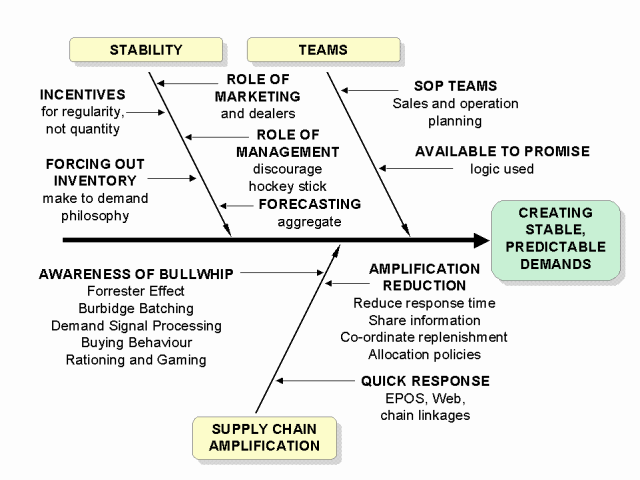
Lean and DEMAND MANAGEMENT

Lean works best when there is a uniform flow of products right along the chain. This will never be perfect, but the purpose of demand management is to make sure that flow is as regular as possible.
Stability of schedules is the aim. There should be no incentives that create demand amplification. For instance, quantity discounts encourage the buying of unneeded quantities in the short term. Rather give discounts for regular orders. Forcing out inventory discourages accountants and others from playing games with inventory to massage the balance sheet. Marketing has an important role to play by encouraging demand when it is low and discouraging when it is high. Management should adopt practices that discourage the end of the month "hockey stick". One possibility is to stagger end-of-month dates for salesmen. Forecasting by family and then breaking down the forecast into product groups discourages unrealistic demands.
Sales and operation planning teams encourage looking at demands from both aspects. Available to promise logic gives a good indication of the sales of the available capacity and encourages stability.
This is where, at each stage along the supply or distribution chain, demand instability increases. The first step towards elimination is understanding. The causes of this so-called Bullwhip or Forrester Effect are:
Amplification reduction involves one or more of the following:
Quick response and efficient consumer response, pioneered in the grocery and apparel industries, encourage direct links with electronic point-of-sale, with demands communicated right along the chain. This is combined with design and distribution actions (see separate sections).